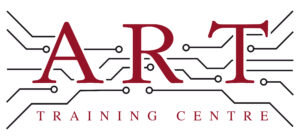Definition
AOI stands for Automated Optical Inspection. It is a process used in electronics manufacturing to automatically inspect printed circuit boards (PCBs) for defects. AOI systems use cameras and image processing software to detect issues such as missing components, misalignments, and soldering faults. This technology helps ensure the quality and reliability of electronic assemblies, making it a crucial component in the production process.
How It’s Used in the Industry
In electronics assembly, AOI is applied after the soldering process to inspect PCBs for defects. The process begins with the PCB being placed on a conveyor belt, where it passes under high-resolution cameras. These cameras capture images of the board and compare them to predefined standards. If any discrepancies are detected, such as incorrect component placement or insufficient solder, the system flags these for further inspection or rework. This is essential for both technicians in training, who learn to identify faults, and experienced professionals, who rely on AOI to maintain high quality and efficiency in production.
History & Origins
AOI became common in electronics manufacturing in the late 1980s and early 1990s as the demand for quality assurance increased. The introduction of advanced imaging technologies and the development of standards, such as those set by IPC, played a significant role in its adoption. As electronic components became smaller and more complex, manual inspection became less feasible, leading to the integration of AOI systems in assembly lines to enhance inspection accuracy and efficiency.
Variations
There are several variations of AOI, including 2D and 3D inspection systems. 2D AOI uses standard cameras to capture images from a top-down view, while 3D AOI employs laser technology to measure the height of components, providing more detailed information about solder joints and component placement. Compared to manual inspection, AOI offers greater speed and consistency, making it a preferred choice for modern electronics manufacturing.
Modern Applications
Today, AOI is widely used in the production of both surface mount and through-hole assemblies. It plays a vital role in ensuring that electronic products meet strict quality and reliability standards, including compliance with IPC guidelines. AOI systems are integral to the manufacturing process, helping to identify defects early, thus reducing waste and improving overall efficiency in electronics production and repair.
Practical Tips & Training
When working with AOI, it is crucial to understand the system’s capabilities and limitations. Technicians should be trained in inspection techniques and familiar with the software used for analysis. Safety points include ensuring that equipment is properly calibrated and maintained. Structured training and certification in AOI processes are essential for developing the skills needed to effectively use this technology in electronics manufacturing.


